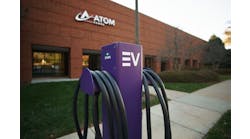From its database of 358,000 risky driving events captured from field service fleets in 2019, Lytx recently released new insights into driving trends in the field service industry. Findings include the five risky behaviors seen most often among field service drivers, most improved driving behaviors, and insights on how driving habits in the field service industry compare to those in other industries.
This data was captured from fleets of all sizes and types within the field service industry, including heating, ventilation, and air conditioning (HVAC), contracting, plumbing, electrical, pest control, landscaping, cleaning, and more. It is part of an ongoing series from Lytx highlighting key behavior trends seen across the nine industries that use the company’s video telematics technology — with the goal of informing and supporting ongoing safety efforts in the industries it serves. According to the data, the most prevalent risky behaviors in 2019 were:
- Failure to stop (when a driver fails to stop at a stop sign or his/her speed remains above 5 mph).
- Late response (when a driver is not distracted yet responded late and abruptly to a readily visible risky situation ahead).
- Food/drink observed.
- Following distance (refers to a risky driving event in which the distance to the vehicle directly ahead is approximately 1.5 seconds and not increasing for at least 4 consecutive seconds).
- Cell phone observed.
The most improved behaviors from 2018 to 2019 included:
- Following distance — improved 46%.
- Posted-speed violation — improved 22%.
- Driver unbelted — improved 19%.
- Failure to stop — improved 10%.
Given the fact that some behaviors appeared on both lists, even with significant improvement, fleets and drivers must stay vigilant and maintain awareness to keep those behaviors trending downward.
Lytx also compared the prevalence of behaviors seen in field service fleets against behavior averages of fleets across all its other protected industries. Comparatively, field service fleets stood out in the following areas:
- Posted-speed violation, which occurred 26% less often.
- Cell phone observed, which occurred 17% more often.
It also discovered that 62% of collisions in the field service segment were rear-end or backing-related occurrences. Even at low speeds, rear-end collisions can lead to costly litigation. Two key ways to reduce rear-end collision potential are maintaining a safe following distance and eliminating in-cab distractions, such as cell phone use.
Visit the company’s website for more information.



